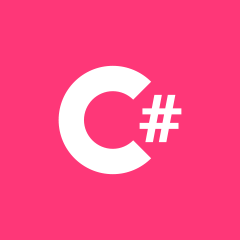C#:使用 Parallel.ForEach 和异步操作限制最大并发操作
我正在尝试使用 asp.net core 2.1 实现自托管 Web 服务,但遇到了实现后台长时间执行任务的问题。
由于每种ProcessSingle方法(在下面的代码片段中)的高 CPU 负载和时间消耗,我想限制同时执行的任务的数量。但是我可以看到所有任务Parallel.ForEach几乎立即开始,尽管我设置了MaxDegreeOfParallelism = 3
我的代码是(这是一个简化版本):
public static async Task<int> Work()
{
var id = await CreateIdInDB() // async create record in DB
// run background task, don't wait when it finishes
Task.Factory.StartNew(async () => {
Parallel.ForEach(
listOfData,
new ParallelOptions { CancellationToken = token, MaxDegreeOfParallelism = 3 },
async x => await ProcessSingle(x));
});
// return created id immediately
return id;
}
public static async Task ProcessSingle(MyInputData inputData)
{
var dbData = await GetDataFromDb(); // get data from DB async using Dapper
// some lasting processing (sync)
await SaveDataToDb(); // async save processed data to DB using Dapper
}
如果我理解正确,问题出async x => await ProcessSingle(x)在 Parallel.ForEach 内部,不是吗?
有人可以描述一下,它应该如何以正确的方式实施?
更新
由于我的问题存在某种歧义,因此有必要关注主要方面:
方法分为三部分
ProcessSingle:从数据库异步获取数据
进行长时间高 CPU 负载的数学计算
将结果保存到数据库异步
问题包括两个独立的:
如何降低 CPU 使用率(例如同时运行不超过三个数学计算)?
如何保持
ProcessSingle方法的结构 - 由于异步 DB 调用而使它们保持异步。
希望现在会更清楚。
PS 已经给出了合适的答案,它可以工作(特别感谢@MatrixTai)。编写此更新是为了进行一般说明。
 慕码人8056858
慕码人80568582回答
-

慕森卡
更新正如我刚刚注意到您在评论中提到的那样,问题是由数学计算引起的。将计算和更新数据库的部分分开会更好。对于计算部分,使用Parallel.ForEach()以便优化您的工作,您可以控制线程数。只有在所有这些任务完成之后。用于async-await将您的数据更新到数据库,无需SemaphoreSlim我提及。public static async Task<int> Work(){ var id = await CreateIdInDB() // async create record in DB // run background task, don't wait when it finishes Task.Run(async () => { //Calculation Part ConcurrentBag<int> data = new ConcurrentBag<int>(); Parallel.ForEach( listOfData, new ParallelOptions { CancellationToken = token, MaxDegreeOfParallelism = 3 }, x => {ConcurrentBag.Add(calculationPart(x))}); //Update DB part int[] data_arr = data.ToArray(); List<Task> worker = new List<Task>(); foreach (var i in data_arr) { worker.Add(DBPart(x)); } await Task.WhenAll(worker); }); // return created id immediately return id;}当你async-await在Parallel.forEach.首先,阅读第一个和第二个答案的这个问题。将这两者结合起来毫无意义。实际上async-await会最大限度地利用可用线程,所以简单地使用它。public static async Task<int> Work(){ var id = await CreateIdInDB() // async create record in DB // run background task, don't wait when it finishes Task.Run(async () => { List<Task> worker = new List<Task>(); foreach (var i in listOfData) { worker.Add(ProcessSingle(x)); } await Task.WhenAll(worker); }); // return created id immediately return id;}但是还有另一个问题,在这种情况下,这些任务仍然一起开始,消耗你的 CPU 使用率。因此,为避免这种情况,请使用 SemaphoreSlimpublic static async Task<int> Work(){ var id = await CreateIdInDB() // async create record in DB // run background task, don't wait when it finishes Task.Run(async () => { List<Task> worker = new List<Task>(); //To limit the number of Task started. var throttler = new SemaphoreSlim(initialCount: 20); foreach (var i in listOfData) { await throttler.WaitAsync(); worker.Add(Task.Run(async () => { await ProcessSingle(x); throttler.Release(); } )); } await Task.WhenAll(worker); }); // return created id immediately return id;}此外,不要Task.Factory.StartNew()在简单Task.Run()就足以完成您想要的工作时使用,请阅读 Stephen Cleary 撰写的这篇出色的文章。 -

牛魔王的故事
如果您更熟悉“传统”并行处理概念,请像这样重写您的 ProcessSingle() 方法:public static void ProcessSingle(MyInputData inputData){ var dbData = GetDataFromDb(); // get data from DB async using Dapper // some lasting processing (sync) SaveDataToDb(); // async save processed data to DB using Dapper}当然,您最好也以类似的方式更改 Work() 方法。
 随时随地看视频慕课网APP
随时随地看视频慕课网APP
相关分类


 C#
C#